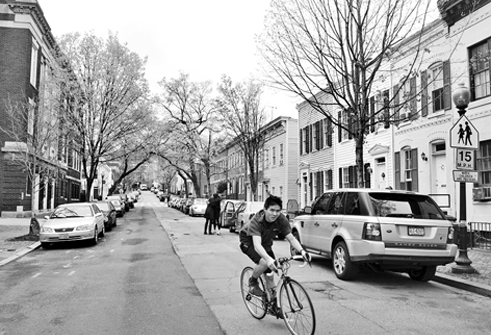Customized Zone Proposed for Residential Georgetown

By Brady HoltCurrent Staff Writer
Georgetown community leaders’ efforts to secure special zoning for the neighborhood’s residential areas have paid off, with the D.C. Office of Planning adopting the bulk of the requests.
The Citizens Association of Georgetown had taken the lead on the effort for a Georgetown “neighborhood custom zone” that would have different land-use requirements than other parts of the city, tailored toward protecting its particular character. The Planning Office incorporated most proposals into a draft rewrite of the city’s zoning code, released last week in advance of Zoning Commission reviews that kick off Sept. 9.
If adopted, the “Georgetown Residential House” zones would have — compared to other parts of the District — lower height limits, stricter standards for accessory buildings and apartments associated with single-family homes, greater conformity with neighboring homes’ front setbacks, and more controls before commercial establishments can open in residential areas.
Jennifer Steingasser, deputy director of the Planning Office, said in an interview that Georgetown could prove to be the first of many such custom zones. “They volunteered to serve as the prototype, and they did most of the work themselves. … They surveyed their neighborhood, walked all their streets, measured all their buildings.”
In many cases, the new Georgetown zones — R-19 for areas with mostly detached homes and R-20 for row house areas — adhere to current zoning regulations, whereas the Planning Office is proposing modifications that would help boost density and facilitate some other land-use changes in many areas elsewhere in the city.
“I think we feel that Georgetown runs very well, and that the way that the community grows and changes is by and large positive,” citizens association president Pamla Moore said in an interview, “so we want to be comfortable that much of what exists now will continue.”
If the Zoning Commission approves the Planning Office draft, homes in Georgetown would be capped at 35 feet in height; side yards would be a minimum of 8 feet wide in R-19 zones and, when provided, 5 feet in R-20 areas; homes couldn’t be closer to the street than both of their neighbors; accessory buildings couldn’t be taller than 20 feet; corner stores and accessory apartments would require special exceptions from the Board of Zoning Adjustment; and roof decks would be prohibited.
There are no proposed changes specific to Georgetown’s commercial areas.
Regardless of the citywide zoning rewrite, any change to a building in Georgetown that’s visible from the public space will continue to require review by the Old Georgetown Board, part of the U.S. Commission of Fine Arts, because the neighborhood has federal historic protections.
In most cases, projects that would violate the proposed new Georgetown regulations would be rejected by the Old Georgetown Board regardless. But Moore of the citizens association said having provisions in the city’s code will be valuable to provide more certainty to both property owners and preservationists, given the flexibility granted to the Old Georgetown Board.
“Zoning is regulations that must be followed, and the Old Georgetown Board has guidelines more than it has regulations,” she said.
The citizens association is working to review the draft zoning rewrite to find items it would like changed, according to Moore. One that’s come up so far is the side-yard setback rule: The Office of Planning’s draft would allow a semidetached row house to go all the way up to its property line, whereas the citizens association requested retaining a minimum 5-foot-wide setback at all times.
Steingasser said her agency had sought to incorporate all the community’s requests and is happy to meet with the citizens association to refine the draft proposal. “This is not a controversy,” she said.
That said, as more neighborhoods seek custom zones in the future, Steingasser said her office isn’t promising to support every request. The Georgetown proposals had community consensus and were consistent with the District’s established planning objectives for that particular area.
“We would review any proposed changes in both a neighborhood and city context — so a proposal should not be contrary to broad city policies,” Steingasser wrote in an email.
This article appears in the Aug. 7 issue of The Georgetown Current newspaper.
